In 2003 the first faculty members moved into the James H. Clark Center, home to the Bio-X initiative conceived five years earlier. At a time when science was suggesting new avenues of research and, indeed, spawning entirely new disciplines of study, Bio-X was designed to bring together faculty and students in engineering, chemistry, physics, biology, medicine, humanities, ethics and the law. The idea was simple: to encourage these bright minds to pursue research that might otherwise fall between the cracks. Since its inception, Bio-X has inspired and funded an incredible array of interdisciplinary collaborations, not only among the 45 faculty who reside at the Clark Center but also among the roughly 600 other Stanford faculty affiliated with Bio-X and the 152 Bio-X PhD fellows. As we celebrate a decade at the Clark Center and 15 years of collaborative research through Bio-X, this timeline highlights some of the remarkable moments and noteworthy achievements that have taken place there.
1998
James Spudich, left, and Steven Chu provide a proof of concept for what would later become Bio-X
Supported by the success of their personal long-standing collaboration, they convene a group of like-minded faculty who  envision a program to link the faculty and students of multiple departments with the goal of sharing information and inspiring new and imaginative research projects.
envision a program to link the faculty and students of multiple departments with the goal of sharing information and inspiring new and imaginative research projects.
A faculty steering committee is created to provide strategic leadership and direction to Bio-X. Key members include William Mobley, Sharon Long, Jean-Claude Latombe, Lucy Shapiro, Richard Zare, Steve Chu, Jim Spudich, Charles Kruger, Michael Levitt, Harvey Cohen, Chaitan Khosla, and Channing Robertson.
Today more than 600 faculty and thousands of other scientists across campus are connected and are conducting collaborative research.
1999
Jim Clark funds the creation of the Clark Center as a hub for Bio-X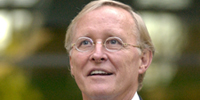
James Clark, a Stanford alumnus, former professor and Silicon Valley entrepreneur, donates $90 million to fund a home for the Bio-X initiative. An anonymous donor contributes an additional $60 million. The Clark Center becomes the “nucleus” for collaborations taking place across campus.
2000
Ground breaking for the Clark Center
The Clark Center officially opens on October 24, 2003, with over half of the lab space left as shell space. The remaining labs would be created and customized in the building over time. Architects Foster + Partners are also known for projects like the Hong Kong Airport and the Millennium Bridge in London.
Today 45 faculty and about 1,000 other scientists work in the Clark Center, and thousands visit the building daily.
The Bio-X IIP seed grants start with the first round of grants
Bio-X awards $3 million in grants for imaginative interdisciplinary research and education projects. The Bio-X Interdisciplinary Initiatives Program Committee called on faculty members to propose imaginative new interdisciplinary, interactive research and educational projects in biology, medicine, computer science, engineering and other disciplines.
Bio-X has now funded 141 projects campuswide bringing hundreds of faculty together to do collaborative work. The seed grants have resulted in hundreds of publications, dozens of patents and more than a tenfold return on research funds for Stanford.
2001
Construction starts for Clark Center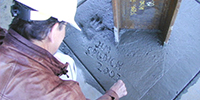
The building was uniquely designed and is constantly changing to meet the needs of the innovative research and technology being developed by the amazing resident scientists.
2002
Matthew Scott is named the new Director of Bio-X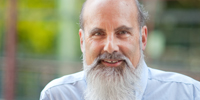
Professor of developmental biology and genetics Matthew P. Scott is appointed new director of Bio-X for a five-year term. While continuing with his active research, two professorships, and teaching in the School of Medicine, Scott will focus on supporting the initiative’s goals and collaborations in several areas of emphasis: biocomputation, biophysics, biodesign, bioengineering, chemical biology, genomics/proteomics and regenerative medicine.
The Bioengineering department is created through a collaboration between the Schools of Medicine and Engineering
Approved by the Board of Trustees, this department offers bachelor’s, master’s and doctoral degrees. Intended to be housed in the Clark Center until it receives its own building, the Bioengineering department begins accepting graduate students in 2003.
Bioengineering is now a very successful department with graduate and undergraduate programs and more than 40 faculty and courtesy faculty.
2003
Clark Center is completed October 24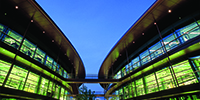
The official dedication is held during a ceremony that highlights how the design of the building supports the work of its inhabitants. The speakers reiterate the goals of Bio-X and speak to the building design’s support and communication of these goals, mainly a transparency and lack of barriers.
Bioengineering department takes up residence in the newly completed Clark Center
Faculty committees worked with the Deans of Engineering and Medicine to bring this imaginative program into being.
Biodesign program moves into the Clark Center
The program features a space for students to bring ideas to life using the prototyping lab, materials and work space. The program’s partnership with the Product Realization Lab expands the capability of students to realize their designs. The Biodesign program has been successful in filing dozens of patents and responsible for dozens of startups in the bay area.
Animal imaging facilities are established in the building
The Stanford Center for Innovation in In-Vivo Imaging (SCI3) provides a facility that engenders a greater understanding of in-vivo images at both molecular and cellular levels. The main hub of SCI3 resources is housed in the Clark Center. More than a hundred laboratories make use of the technology offered at the SCI3 facility annually.
2004
Bio-X PhD fellowship program starts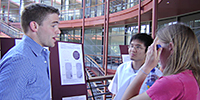
Nine graduate students win fellowships in the first class to be awarded Bio-X PhDs. The students are from a variety of departments, including Chemistry, Mechanical Engineering and Neuroscience.
More than 150 PhD fellows have been funded by Bio-X to date; 70 of them have already completed their programs and received their doctorates. (See photo at bottom.)
Simbios is funded
Simbios, the NIH Center for Biomedical Computation at Stanford, receives $20 million for a center that explores and simulates biomedical discoveries. The center will develop software that makes it possible to study biological structures and their functions in a safe environment.
Almost 10 years later, Simbios is still successful and continues to receive funding from NIH.
2005
First Bio-X Symposium, “Watching Life,” hosts more than 400 participants
Jointly hosted by Bio-X, Stanford Molecular Imaging Program and the Beckman Center for Molecular and Genetic Medicine, the event includes presentations on imaging molecules and effective approaches to research. Bio-X now holds at least four symposia on an annual basis.
First Annual Kids’ Day at Clark Center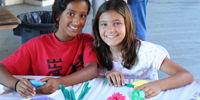
Stanford students and faculty assist visiting children with hands-on science experiments. Kids are drawn into the amazing and important aspects of science.
This year, Clark Center hosted the eighth Kids' Science Day at Clark with more than 300 young people attending the event.
2006
Microfluidics lab opens its foundry at Clark Center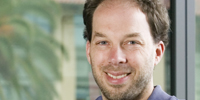
Professor Stephen Quake opens Microfluidics Foundry in the Clark Center to assist academic researchers. The foundry will be a research resource for teachers, researchers and students who work on advancing this effective and valuable technology.
Bio-X undergraduate summer research program begins
The program started with one applicant in 2006 and has grown to more than 100 applicants annually.
In 2013, Bio-X funded 64 undergraduate students to work in Bio-X affiliated Laboratories. (See photo at bottom.)
2007
Carla Shatz becomes the new director of Bio-X, Stanford University
President Hennessy names Shatz, head of Harvard’s neurobiology department, to lead Bio-X and chart the growth of its efforts in biomedical research.
2008
Bio-X NeuroVentures Program starts
Bill Newsome directs the new program designed to enhance collaborative activity in neurosciences. The first manifestation of the program will be development of the optogenetics laboratory, building on work by Professor Karl Deisseroth funded through Bio-X in previous years.
NeuroVentures has funded major seed grants as well as collaborative equipment grants.
Noninvasive diagnosis of fetal aneuploidy by shotgun sequencing DNA from maternal blood
New findings developed by a Bio-X professor succeed in finding a new way to sequence DNA samples. Professor Stephen Quake and team have advanced the capabilities of diagnosing conditions before birth.
2009
Professor sequences his entire genome at low cost, with small team
Stephen Quake completes a genome sequencing project for less than $50,000. Scientists will benefit from this step in cost-efficient technology by creating more examples of human genetic code to study specific genes and mutations.
2010
Karl Deisseroth is awarded the inaugural HFSP Nakasone Award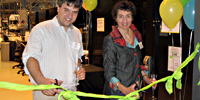
This Stanford Professor and Bio-X researcher is awarded an unrestricted research grant of $10,000 for his work developing new optogenetic methods for the study of neuronal networks underlying behaviors.
Optogenetics Innovation Laboratory opens in Clark
The opening is marked by a Laboratory Open House Ceremony and ribbon cutting by Shatz and Deisseroth, director of the lab.
During the past two years, more than 130 participants from Stanford and around the world have enrolled in one of three types of training courses hosted by the Optogenetics Innovation Laboratory (OIL).
2011
Daphne Koller, Ph.D., trains computers to analyze breast cancer microscopic images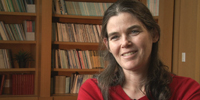
Koller, professor of computer science, and team develop C-Path, which assesses more than 6,500 factors while evaluating the tissue of cancer patients. This machine will assist doctors in identifying cancer while also learning more about the disease itself.
2012
Brian Kobilka is awarded the 2012 Nobel Prize for Chemistry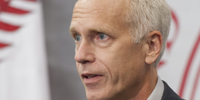
The studies by Kobilka and colleague Robert Lefkowitz are crucial for understanding how G-protein-coupled receptors function. In 2011, Kobilka and his research team captured an image of the β-adrenergic receptor at the exact moment that it is activated by a hormone and sends a signal into the cell.
2013
Stanford team discovers receptor for Alzheimer's disease beta-amyloid blocker
Research published in Science shows how a protein fragment known as beta-amyloid, strongly implicated in Alzheimer's disease, begins destroying synapses before it clumps into plaques that lead to nerve cell death. To read more about this work and Bio-X director Carla Shatz, see the October 2013 issue of Discover Magazine.

Bio-X PhD fellows come from a variety of departments, including Chemistry, Mechanical Engineering and Neuroscience.

The Bio-X undergraduate summer research program has grown to more than 100 applicants annually.
